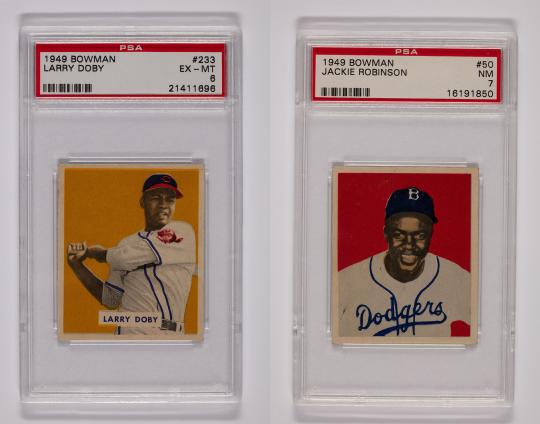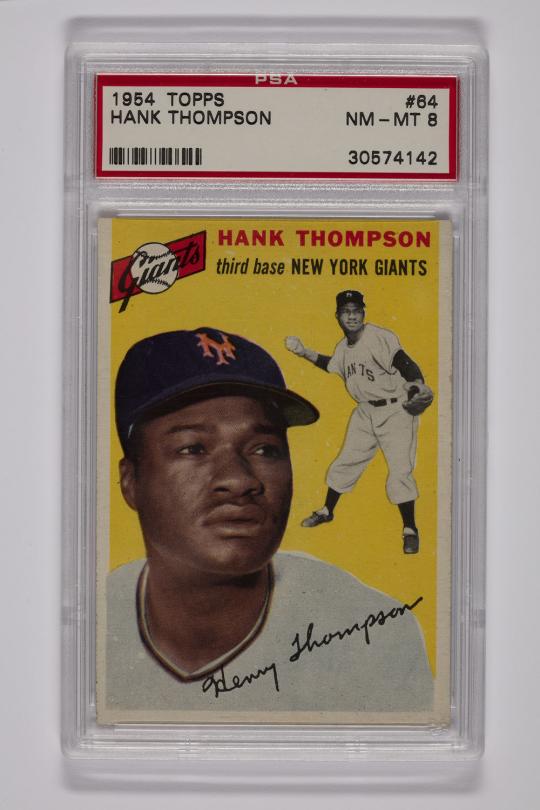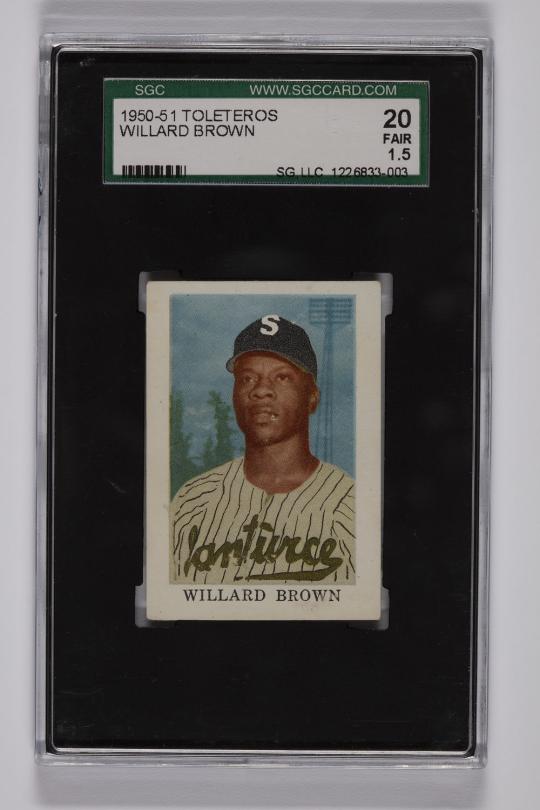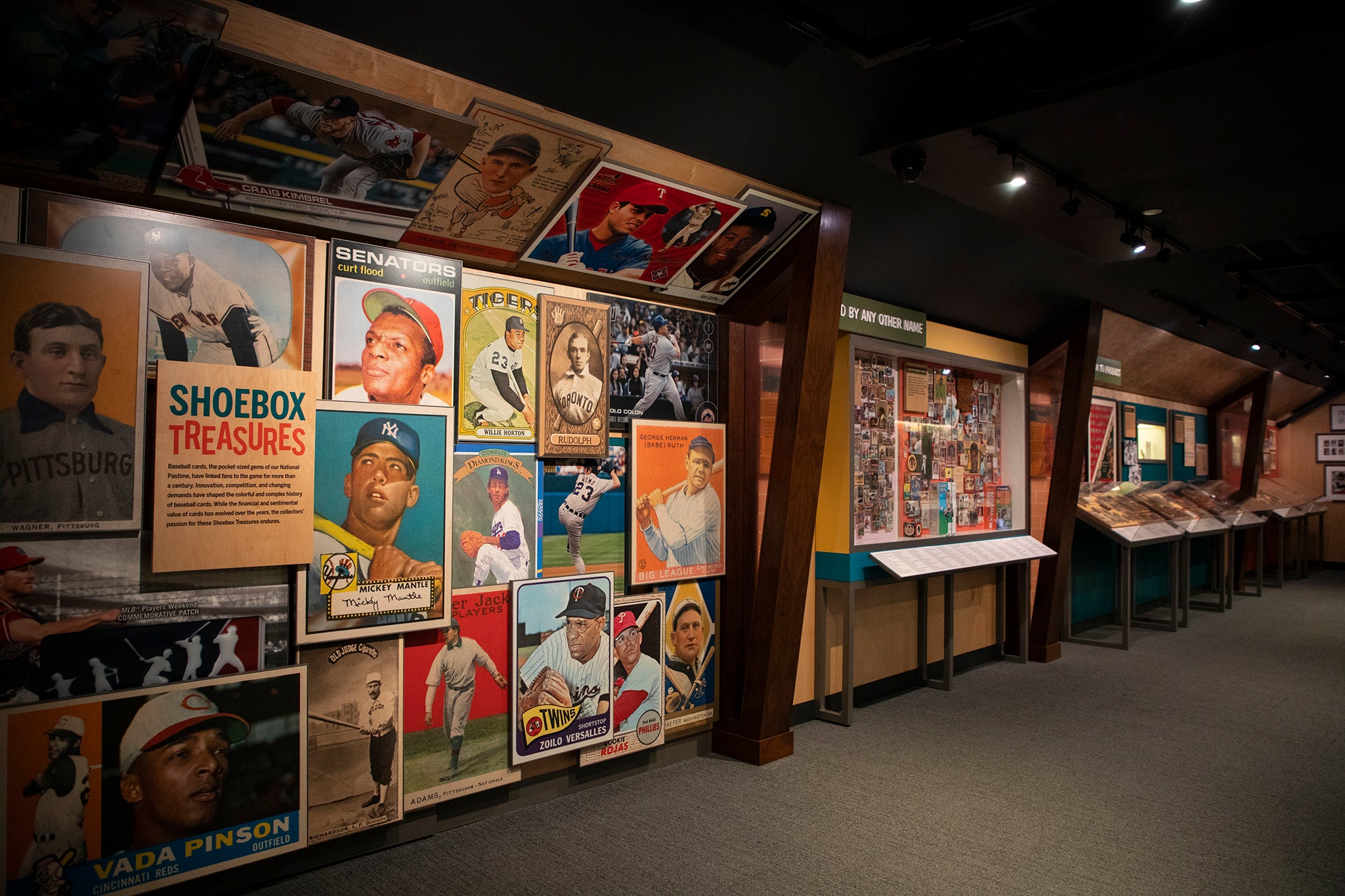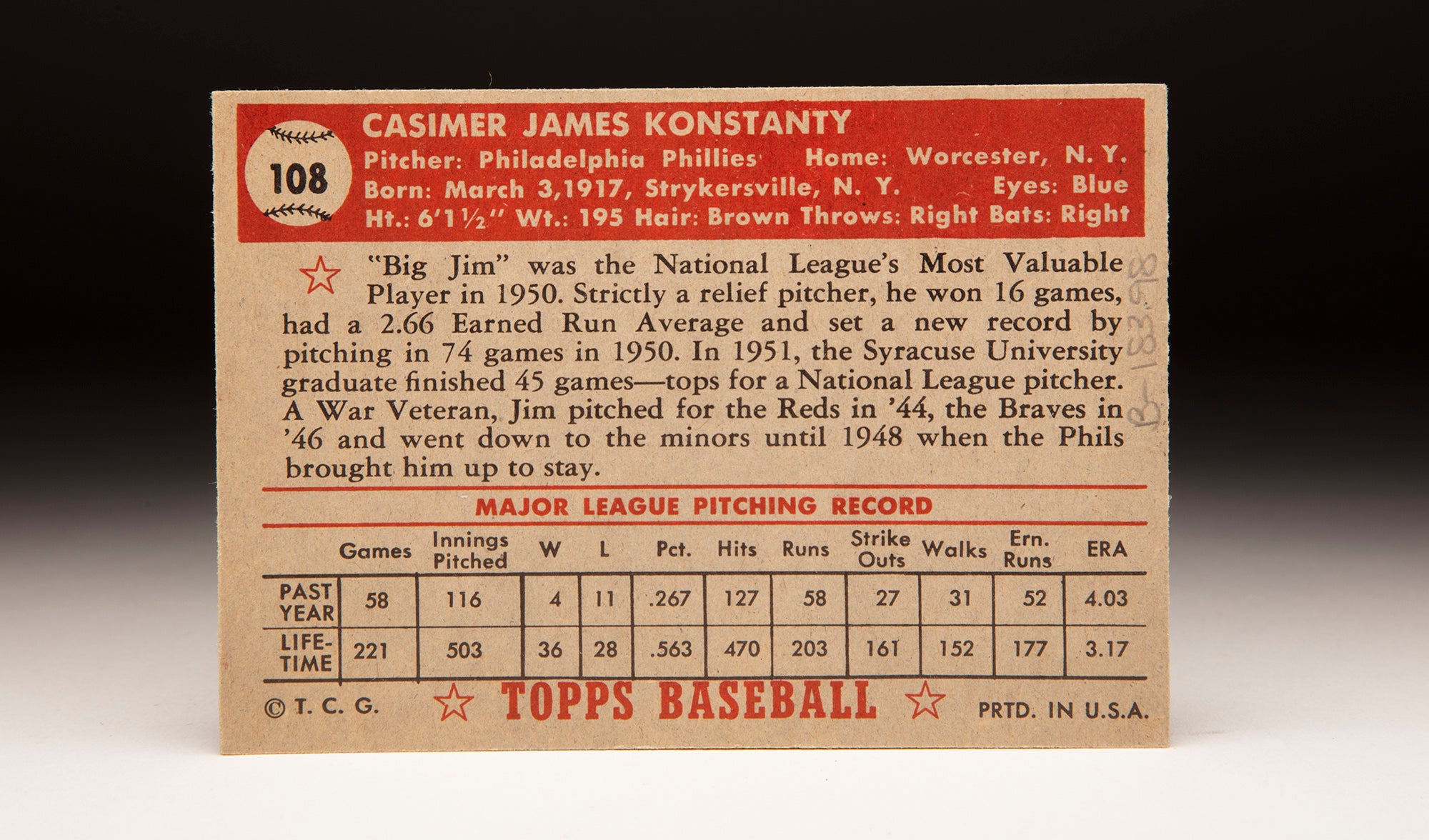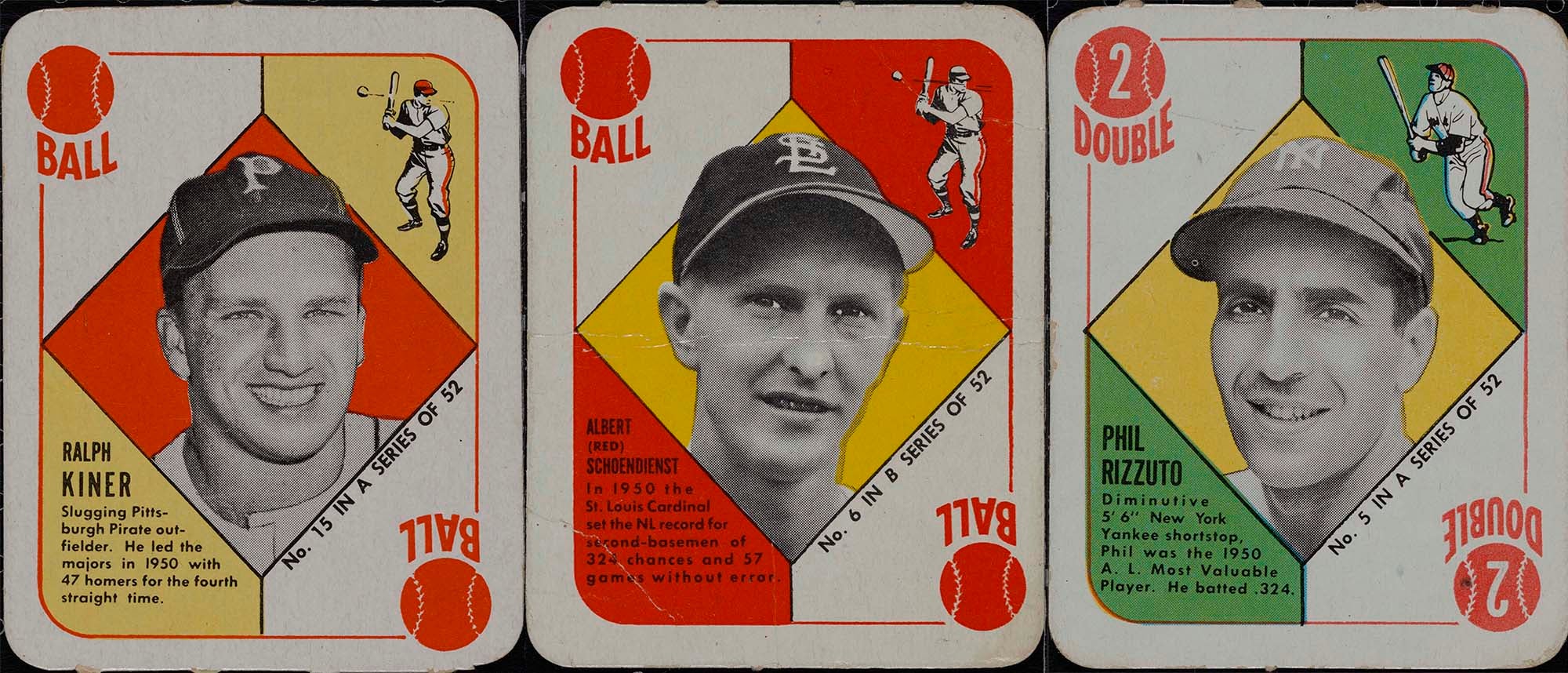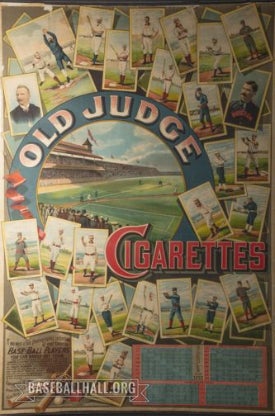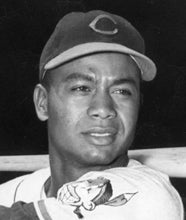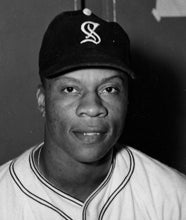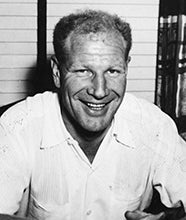- Home
- Our Stories
- Shoebox Treasures exhibit updated with rare PWCC Vault baseball cards
Shoebox Treasures exhibit updated with rare PWCC Vault baseball cards
As the National Baseball Hall of Fame and Museum prepares for our summer visitors after a quiet winter, we take the opportunity each year to update many of our exhibits. Of special note, Shoebox Treasures, the Museum’s exhibition about baseball cards, is designed to allow for updating, expansion and changing displays.
This year marks the fourth season that the Hall of Fame and PWCC Marketplace have collaborated on a section of the exhibit called “From the PWCC Vault.”
John Odell, our Curator of History and Research, served as lead curator on Shoebox Treasures and takes time each winter to direct the annual update. This interview has been lightly edited for clarity.
Official Hall of Fame Merchandise
Hall of Fame Members receive 10% off and FREE standard shipping on all Hall of Fame online store purchases.
Hall of Fame Membership
There is no simpler, and more essential, way to demonstrate your support than to sign on as a Museum Member.
Q: This year marks the 75th anniversary of Jackie Robinson breaking baseball’s color line in 1947. How did that weigh into your thoughts for the PWCC update?
John Odell: Two years ago, when I looked at the calendar and realized that this notable anniversary was coming up, I wanted to do something special. With PWCC’s help, I think we are showing some especially interesting cards with some great stories.
Q: What stories did you want to tell?
JO: First, obviously, is Jackie Robinson. Moreover, there are a few other stories that weave into 1947 that sometimes get lost in the Robinson celebration.
Q: Like what?
JO: Certainly Larry Doby, the great Newark Eagles center fielder, who was purchased by Cleveland Indians owner Bill Veeck and made his American League debut on July 5, 1947, just two and a half months after Robinson. However, many baseball fans don’t know that a total of five Black ballplayers integrated the formerly all-white American and National Leagues, and we thought it was important to give the other three some time in the spotlight, too.
Q: Tell me about the other three men.
JO: Two, Hank Thompson and Willard Brown, were purchased by the St. Louis Browns from the Kansas City Monarchs on July 17, 1947, and quickly made their AL debuts. The final Black player to cross the color line that year was pitcher Dan Bankhead of the Memphis Red Sox, who in August joined Robinson on the Brooklyn Dodgers.
Q: So how did they do?
JO: Not particularly well, and their lack of success illustrates how hard it was for Robinson and Doby to make the marks they did, ultimately making it to the Hall of Fame. The Browns, after their flash-in-the-pan 1944 pennant, quickly reassumed their place at the bottom of the American League in both record and attendance. By midseason, St. Louis was already 26 games out of first, and the club ended the season with a paid attendance of just over 4,000 per game, which is astoundingly miserable.
The pressure on Thompson and Brown to turn around the moribund franchise was huge, but the resources and support were meager. The men later noted that they received no assistance from the St. Louis front office in finding housing, for example, and their teammates wouldn’t even warm up with them.
Regarding Bankhead, many pitchers found difficulty moving from the Negro Leagues to the AL and NL, as their off-speed and breaking ball repertoire failed to translate to their new leagues. Bankhead was a good example of this. In four games he pitched to a 7.20 ERA. Brooklyn knew what kind of support to provide, but baseball is hard!
By the end of the season, Thompson and Brown had been released. Bankhead went to the minors and returned a couple of year later.
Q: So tell us about the cards.
JO: Gladly. Among the most interesting of all rookie cards are Jackie Robinson’s. In 1947, Bond Bread began issuing a black-and-white set focused wholly on Robinson, called D302 in the hobby. The first card, Robinson’s rookie card, is a portrait of him wearing a glove and showing a facsimile signature. It is the most plentiful of the D302 set, and PWCC has loaned us one of these. Recent scholarship indicates that over the next two years, 12 more Bond Bread cards were issued. These are considered part of the same set, and PWCC has loaned us one of these, as well. Finally, a Robinson D305 Bond Bread, without the glove, also issued in 1947, is being loaned by PWCC.
During the late 1940s and early ’50s, Toleteros issued a series of tobacco cards in Latin America. The 1950-51 series was a color issue featuring the Puerto Rican Winter League, which included future Hall of Famer Willard Brown. (Toleteros baseball card photographed by Milo Stewart Jr./National Baseball Hall of Fame and Museum)
In 1949, Bowman produced cards for Jackie Robinson and Larry Doby. Both (together with their respective Leaf issues from that year) are often considered to be rookie cards.
Why are these thought to be rookie cards? Because collectors like the nationally issued Topps and Bowman best, both were issued in color, and they are popular. Card collecting isn’t known for its scholarly rigor. It’s supposed to be fun! So we relax and go with it.
PWCC has also loaned a rare 1952 Berk Ross for Robinson, and several other beautiful Topps and Bowman cards for both Robinson and Doby.
The Hall of Fame and PWCC have collaborated on a section of the Shoebox Treasures exhibit called “From the PWCC Vault” for a fourth season in 2022, with this year's collaboration honoring the 75th anniversary of baseball's integration. (Topps baseball card photographed by Milo Stewart Jr./National Baseball Hall of Fame and Museum)
During the late 1940s and early ’50s, Toleteros issued a series of tobacco cards in Latin America. The 1950-51 series was a color issue featuring the Puerto Rican Winter League, and we are thrilled to have this card of Hall of Famer Willard Brown to show. Brown was a five-time All-Star with nine seasons in the Negro Leagues before he went to St. Louis, and Negro Leagues cards are just always exceedingly rare.
Finally, PWCC loaned a 1954 Topps Hank Thompson card. Thompson had returned to the big leagues with the Giants after a brief stint in the minor leagues in 1951.
Q: That is quite a selection!
JO: It is indeed, and we are thrilled to be able to share these cards with our visitors. To see a set as rare, varied and in such good condition as this, you would probably have to go to The National, the biggest annual card show in the country, and you still would likely fall short.
Q: Thank you, John.

